
Base price: $20.
1 player.
Play time: ~15 minutes.
BGG Link
Logged plays: 5
Full disclosure: A review copy of A Gentle Rain was provided by Incredible Dream Studios.
Finally less sick, which is nice, but in the meantime I’ll give y’all at least one solo game. I was going to do more, but, time gets away from us all, and it’s my post-being-sick weekend so I’m going to try and enjoy the 55-and-overcast that qualifies for “nice weather” in the Seattle area. I’m very excited; I have a coat ready and everything. But I digress. Speaking of Seattle, the game we’re covering today is going to be A Gentle Rain, so let’s dive right in and check it out!
In A Gentle Rain, your goal is just to have a nice, pleasant time. Get cozy, place some tiles, place some tokens! The whole thing is a very nice time. We’ll get into it. Can you place all of the tokens before you run out of tiles?
Contents
Setup
This is pretty easy. Shuffle the tiles:
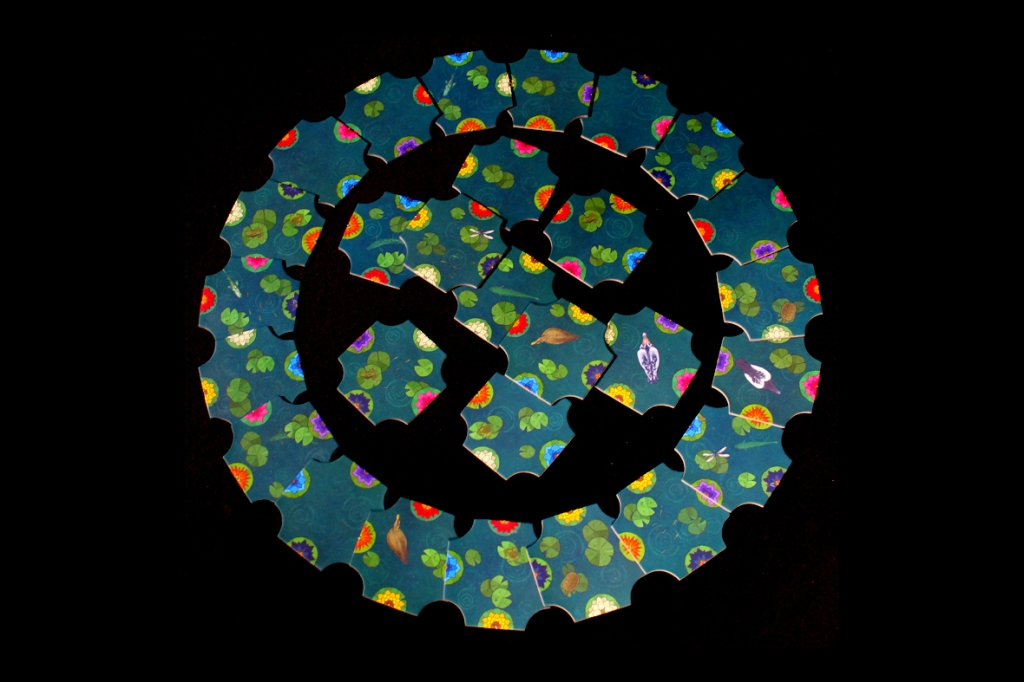
Set the tokens nearby.
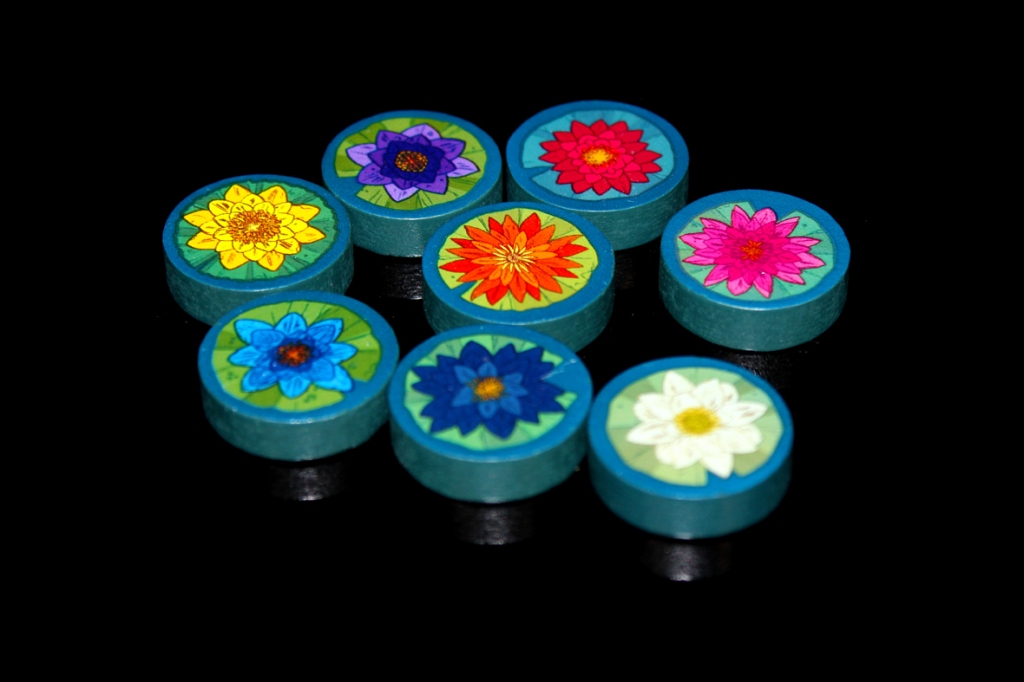
You should be ready to start!
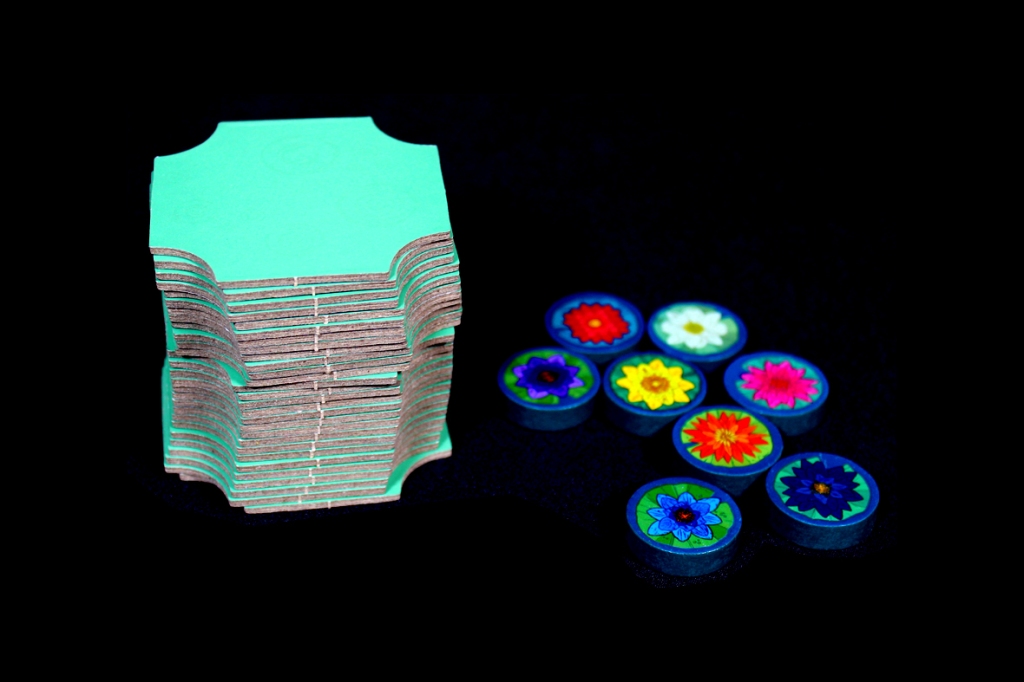
Gameplay
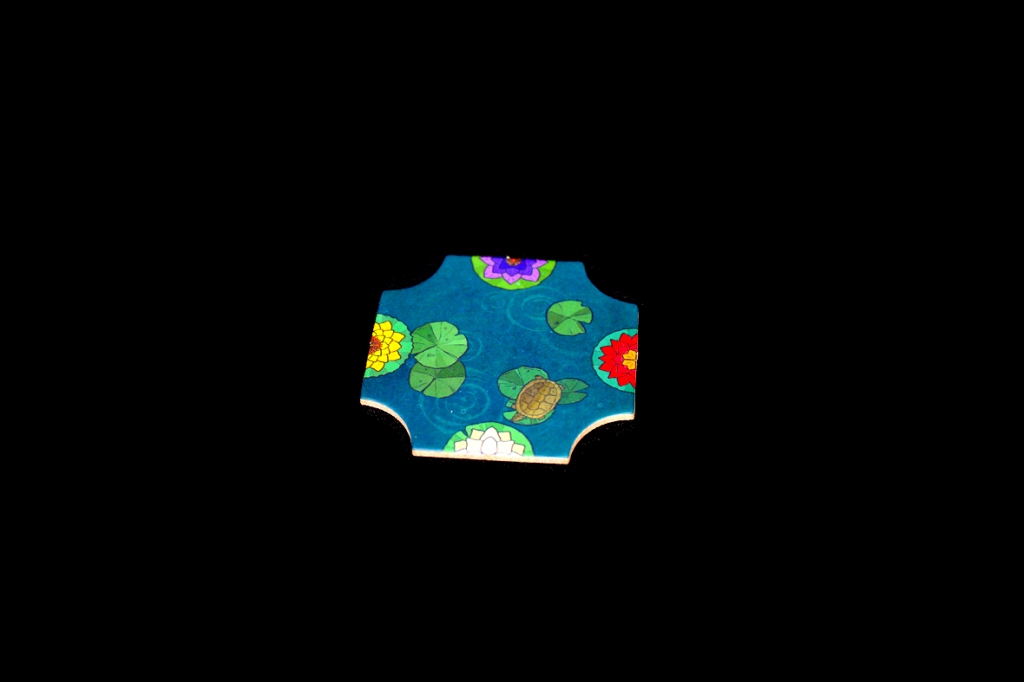
This is also pretty straightforward, which is nice. You play until the stack of tiles runs out, and each turn you just take a tile off top and play it. To place a tile, you must place it such that it connects one flower half to the matching other flower half on another tile. All adjacent edges have to match!
If you make a square of four tiles such that there’s an empty circle in the center, then you can place a token! The token must match one of the four flowers around the circle, however; if you don’t have any remaining tokens that match, then you don’t get to place any! Tough.

And that’s kind of it. If you place all the tokens, you’re done! Your score is the number of tokens (8) plus the number of tiles remaining. If you run out of tiles, you’re also done! Your score is the number of tokens you placed.
Player Count Differences

None! It’s a solo game. Don’t get any ideas.
Strategy
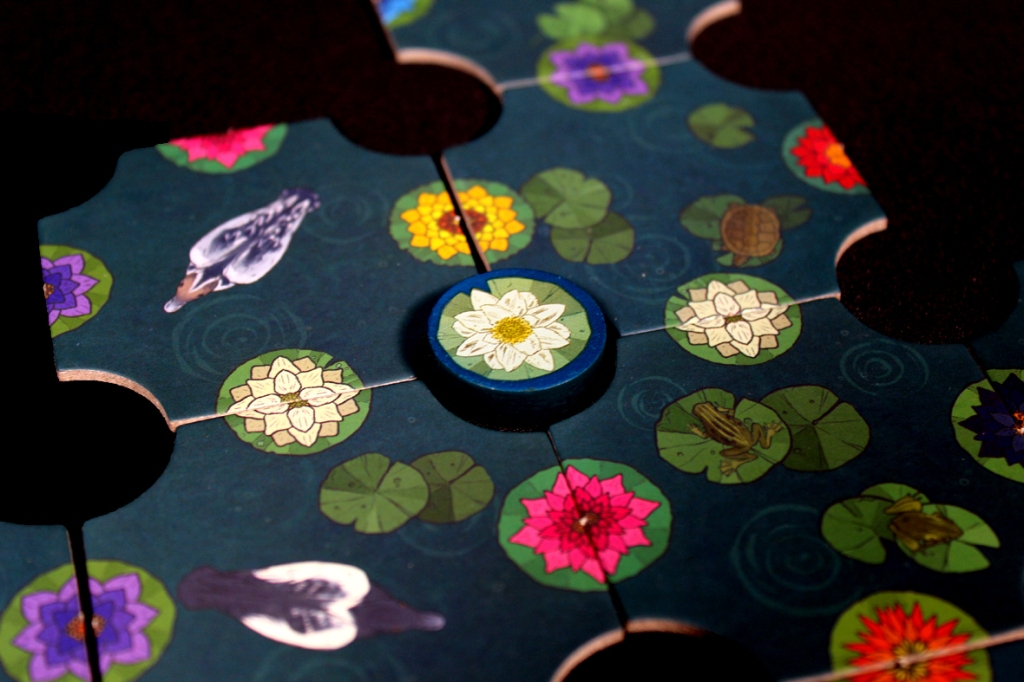
- Tiles have certain rules; it’s worth remembering them. You cannot place a tile such that the flowers don’t match up, for instance, so setting yourself up so that you have playable options long into the game is always a good idea.
- Generally, placing to create corners is helpful; creating u-shapes is, maybe less. If you make a u-shape, you’re relying on a very specific tile to exist if you want to fill in that spot. If you’re right, hooray! You probably get to place two tokens. If you’re wrong, well, you created a very specifically dead spot on the board that you’ll have to deal with later.
- It’s challenging to determine which token is the right one to place. I usually err on the side of the token with the most flowers currently on the board (just because there’s some argument that I might make fewer of those flowers in the future), but there may be other justifications for determining which token you want to drop. The issue can often be, however, that you need to make sure that you don’t set yourself up so that the circle you make can’t get a token placed (as the relevant tokens are already placed).
- Sometimes it’s worth sacrificing a future tile placement to get a token down. It’s tricky to determine when this is the best option, but it’s frequently at least worth considering. You do need to play all eight tokens if you want to win.
Pros, Mehs, and Cons

Pros
- It’s a very peaceful and pleasant experience. There’s a nice, patient methodical play at work when you can just draw tiles and place them while kind of vibing. It’s not too stressful when that happens, anyways; you just kind of go through the motions and play what you need to play.
- Very portable! It’s an extremely small-box game, if you’re looking for some solos that are easy to pack.
- Quick to learn, which is also nice. All you do is draw and place a tile; there’s almost nothing else to it, which is nice. The token placement adds a wrinkle, but not enough that it makes play particularly difficult; it just incentivizes some particular build pathways.
- Very much a “play anywhere” game. It would be nice if the tiles were a bit smaller, perhaps, if you wanted to play truly anywhere, but you can pick it up and take it with you most places if you’re looking to just kick it for a bit. It’s got a slightly bigger footprint than some of the Button Shy solo games, for instance.
- The art style is pretty nice, as well. It’s a very flowers-in-the-garden vibe, and I like it! Nothing too intense, and the muted palette really lets some of the flower colors pop on the tokens and the tiles.
Mehs
- I do appreciate that this game follows the sacred rule of a lot of tile-placement games where you’re frequently stuck with a configuration that’s the perfect opposite of the one you need. It’s always frustrating and it’s part of the appeal of the whole tile-placement puzzle, though some players might find it genuinely annoying.
Cons
- There’s likely some benefit to memorizing what tile configurations are available, which does take some of the “relax” out of the whole thing. It’s just that certain tile configurations cannot appear (for instance, two of the same color flower on a tile), and you should avoid making spaces that want those configurations to appear. There are only so many tiles, though, so knowing what your options are can be helpful. It just feels a bit contradictory to the vibe of the game that memorization can be a pretty key informative factor.
- The red and the orange flowers look unfortunately pretty similar. I definitely got thrown off by that in a game or two. I might just not have been close enough. It’s partially that they don’t seem to match their tokens, either, fully, so that throws me off even further.
Overall: 7 / 10
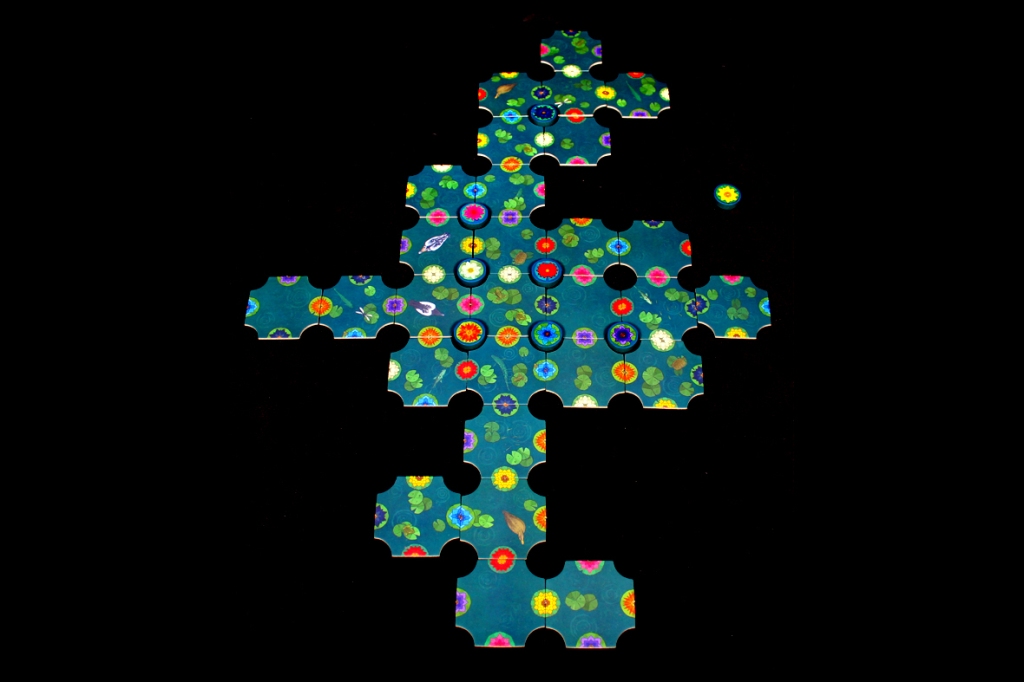
Overall, I find A Gentle Rain to be a pleasant experience. It doesn’t quite have the “oomph” that I think is going to keep me coming back forever, just strategically, but there are a lot of solo games with similar strategic placement vibes that I do play a lot already. I think the game’s whole thing is trying to shoot for being a relaxing, calm, experience, and I think it usually lands it. That kind of conflicts with the benefit that memorizing all available tile configurations could provide, granted, but I think if you’re trying to memorize every possible tile you’re playing a very different game than A Gentle Rain is trying to be. Even then, I find myself trying to remember certain tiles that I’ve seen so I know what to expect, but maybe I’m playing a more intense style. I would love to see a bit more contrast between the red and orange flowers, too; I’m not sure why they look so similar to me, but it can be hard to distinguish them, at times. That said, I think for a relaxing solo experience there’s a nice amount happening here. The game is light, quick, and relatively straightforward; you’re not looking at a ton of components or rules to get through. Draw a tile, play a tile, make a circle. You can live your best life that way. If you’re interested in that sort of thing, you enjoy a quick little puzzle, or you’re looking to relax by yourself a bit, you might enjoy A Gentle Rain! I’ve found it fun.
If you enjoyed this review and would like to support What’s Eric Playing? in the future, please check out my Patreon. Thanks for reading!